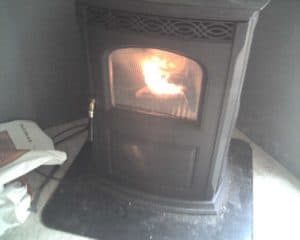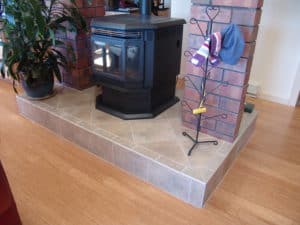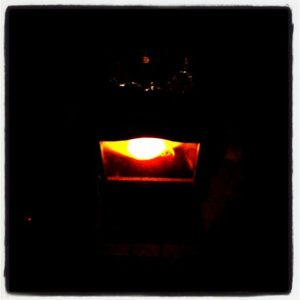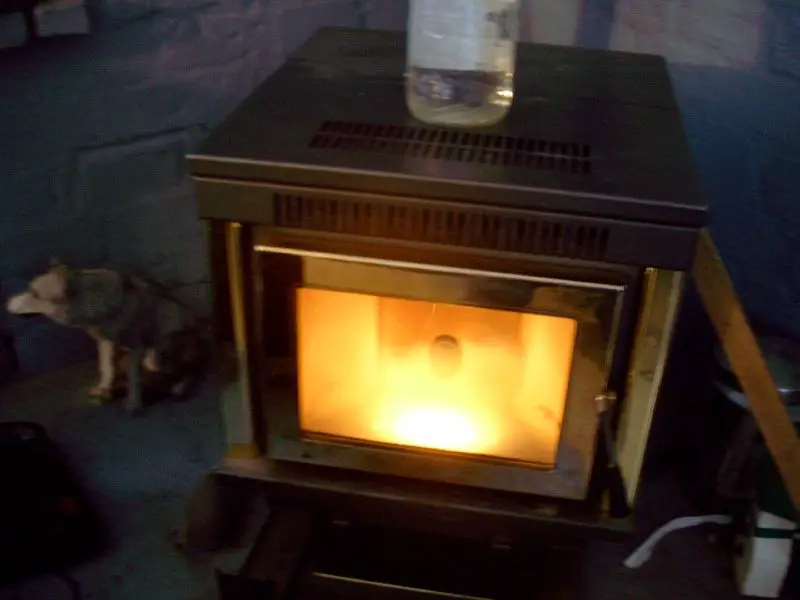Like any other type of heating appliance, choosing the best pellet stove for your home heating needs require a significant amount of research.
Besides many options to choose from, there are several considerations to factor in when selecting the right product for your mobile home.
Each one of those considerations is a key factor in how efficiently and safely your unit operates.
This buyer’s guide gives valuable advice that can help you pick the correct unit.
Seven Manufactured Home Pellet Stove Shopping Factors
Consider these factors when shopping for a pellet stove:
- Must-have Features
- Size
- Controls
- Warranty
- Power Consumption
- Noise Levels
- Can You See the Flames?
1. Must-have Features
Here are the features to look for in each and every pellet stove on offer:
- Controllable Heat
- Combustion
- Heat Exchanger Tubes
- Electrical Components
- Top Feed
- Self-Cleaning
Controllable Heat
Because there is never more than a single handful of biomass pellets burning at a particular time, pellet stoves usually come with the ‘controllable heat’ feature.
Unlike wood stove units which tend to cool down and flare up depending on the amount of wood you add and the overall size of your firewood.
Pellet stoves will produce a steady and controlled heat regardless of how you choose to run it.
Make sure the unit of your choice has the controllable heat feature.
Combustion
Pellets are supplied in small pieces that can’t burn properly unless sufficient air is blown through them.
For that reason, many pellet stoves are equipped with blowers.
Heat Exchanger Tubes
Your unit needs to have heat exchanger tubes. These heat exchangers are tasked with transferring heat from one internal medium to the next.
In some pellet stoves, the outside part of the tubes is designed to be heated by the open flames while the interior section circulates the warm air – the convection fan blows fresh air into the house.
Because the firebox that comes with most pellet stoves is usually narrow, most stoves are equipped with short tubes, which are often located on the top section of the firebox.
At about 18″ in length, they can make your stove to be extremely efficient based on the total amount of heat dissipated in relation to the total amount of pellets used.
Electrical Components
Most pellet stoves are designed to be ignited by electricity.
Such onboard accessories as fans and thermostat are powered by electricity as well.
In the likely event that you experience a power outage, however, you can purchase a battery-operated backup pack or hook the stove up to your generator.
Choose a stove that will give you 100 percent access to the electrical parts.
Furthermore, look for a product that uses as less electrical energy as possible.
Most of the products you will find in the store uses electricity to operate their blowers (often two), the auger, and in some cases an onboard computer.
However, the good news is that they tend to consume the same amount of electrical power that a 100-W light bulb would require under normal operating conditions.
Top Feed
A lot of the pellet stoves in the market today are “top-fed,” meaning the pieces of pellets are simply dropped into the compartment down a channel from above.
Self-Cleaning
One major concern many buyers have about the top-fed stove is cleanliness.
Choose a stove that will clean itself after a given period, say, an hour.
A great pellet stove should stop feeding pellets to allow the combustion blower to blow on a high and allow ash to get out of the burning compartment.
This helps keep the burn pot (burning compartment) clean and keep its high efficiency
2. Size

Size is a top consideration.
When choosing the size of the pellet stove, it is recommended that you look at 3 primary specifications:
- heating capacity (measured in BTUs)
- energy efficiency
- and hopper size (more on these later).
There are two main classes of pellet stoves –
- low output
- and high output pellet stove options.
Whether the unit falls in the low output category or high output depends entirely on the overall amount of heat it’s able to produce. This is referred to as the heat out range or stove’s efficiency.
Generally, pellet stoves come with efficiency ratings somewhere between 75 and 90 percent plus a heat output range/efficiency of 40000 BTUs or higher.
Physical size does matter as well.
The unit’s physical size will depend on its heat generating capabilities. The hopper size can also influence the size of the unit.
A smaller stove can warm a large room perfectly but not if the hopper is overly small, for the heat won’t last long enough due to the smaller amount of pellets it can hold at any specific time.
So, basically, heating larger spaces will require a large hopper and a considerably higher BTU range.
Conversely, heating smaller spaces will require a small hopper with a much lower BTU range.
But, What’s The Ideal Size of a Pellet Stove?
BTU (British Thermal Unit) can be used to measure the useful heat produced by a stove.
Broadly, the bigger the stove the more the BTUs you should expect from it, and vice versa.
Pellet stoves normally come with a capacity between 10000 BTU (that’s probably the smallest pellet stove you could get) and 90,000 BTU (larger pellet stoves).
Most pellet stoves you will find in the store comes with 40000 – 60000 BTU capacity.
So, as mentioned earlier, the first thing worth figuring out when shopping for a pellet stove unit is how big you want it to be.
The unit’s capacity is directly proportional to the square footage of your space.
For example, to sufficiently heating a space the size of 2000 sq. ft., you’d need a 60000 BTU stove.
Here is a calculation of what pellet stove you will need for common square footages found in modern manufactured homes:
| Square Footage | Pellet Stove Capacity |
|---|---|
| 600 sq. ft. | 18000 BTU |
| 800 sq. ft. | 24000 BTU |
| 1000 sq. ft. | 30000 BTU |
| 1200 sq. ft. | 36000 BTU |
| 1400 sq. ft. | 42000 BTU |
| 1600 sq. ft. | 48000 BTU |
| 1800 sq. ft. | 54000 BTU |
| 2000 sq. ft. | 60000 BTU |
| 2200 sq. ft. | 66000 BTU |
| 2400 sq. ft. | 72000 BTU |
Stove manufacturers normally list the largest or maximum square footage their pellet stoves can heat.
It is important to note that those listings are not the same as the square footage sizes provided according to DOE directives.
For example, You will find a 48000 BTU pellet stove unit.
- According to the directives of DOE, such an appliance is best for heating up 1600 sq. ft. of space.
- What you will find on the listings of the pellet stove or on the specifications sheet is that the product can ‘heat up 2500 sq. ft. spaces’.
- Theoretically, a homeowner can heat areas up to 2500 sq. ft. under perfect room conditions.
- Practically, however, it only makes sense you buy a 48000 BTU pellet stove for 1600 sq. ft.
The Case with Secondary Heating
Some homeowners use their pellet stoves (and wood stoves) as secondary heating systems.
In such cases, your primary heating unit (a furnace, for instance) should do most of the heating and you can comfortably disregard the BTU to square footage calculations.
A Few Words About Energy Efficiency (Normally Between 70 Percent and 84 Percent)
If you compare them to wood stoves, pellet stoves are extremely energy efficient. They churn out twice as much heat energy as the traditional wood stove.
Also, most of the pellet stoves you will find in the store are EPA certified; this fact pretty much guarantees you high energy efficiency.
But, there is still a considerable energy efficiency interval when we begin to talk about pellet stoves in general.
The most often quoted one is 70 percent – 84 percent energy efficiency, which isn’t bad.
Obviously, if you want the most energy-efficient unit, then you will need to choose something close to or equal to 84 percent.
High energy-efficiency pellet stoves don’t just mean you will be using fewer pellets to receive more energy. Another benefit at the end of the equation is the low gas emission rates.
If there’s one thing pellet stoves are notoriously known for is low gas emission rates which are actually a consequence of the stove’s high energy.
So, the simplest way to cut emission rates further down the line is to purchase a stove with an 84 percent energy yield. That way, only 16 percent (rather than 30 percent) would be the actual mass out which gas emission will be expelled.
The Size of the Hopper (Between 20 lbs. and 60 lbs.)
The Hopper is one of the most vital parts of any pellet stove. It is where the pellets awaiting to be feed in your pellet stove are kept.
The ins and outs of the workings of a Hopper are beyond the scope of the guide, you need to choose one carefully.
You will need to restock your hopper with fresh pellets constantly.
However, the rate at which you will need to feed the hopper will depend on:
- Speed of burning
- Size of the hopper
How quickly your pellets burn can be set and monitored through a thermostat. The smartest decision you can make, as aforementioned, is to invest in a pellet stove equipped with a larger hopper.
A large hopper will take a long time to finish a given stock of pellets. In turn, you will have a longer period to bask in the warmth emanating from the stove.
Three Factors to Consider When Choosing the Size of Pellet Stove
There are factors that need to be taken into account to help you determine such things as hopper capacity, the BTU range and the size of the stove. Ask yourself these questions:
Factor #1: How Often Do You Plan to Use the Stove?
Make up your mind how often you’ll be operating the pellet stove.
If you require constant heat, then you will need to choose a product with a bigger hopper and higher BTU rating so that it can support more pellets and burn for a long time.
If you plan to use the stove for a few hours at a given time, then you’ll need to choose a unit with a small hopper and low BTU range.
Factor #2: Area/Space to Be Heated
Find out the size of the area you wish to heat with the pellet stove.
Make a decision on whether you want to heat your whole home with the stove and make it your primary source of heat or if your objective is to do zone heating for one room or a few small rooms and make the stove your secondary source of heat.
Factor #3: Pellet Stove Placement
Where do you plan to position the pellet stove?
Bear in mind that the stove should be installed in an area that’s going to permit it to provide greater coverage and heat larger area.
Place your unit in a space that will permit the blower to circulate and push heated air all over your home.
3. Controls
Very much like any other home heating appliance, operating your pellet stove unit at full power isn’t a viable option because your space can get very hot inside.
Also, part of the generated heat is more likely to go waste. Hence, virtually all pellet stoves are equipped with basic and sometimes advanced controls to help you make better heating decisions.
The most common accessory that you will find in these appliances is a thermostat.
A thermostat permits you to make changes to the temperature of the stove through heat settings.
Entry-level models come with about 3 to 4 heat settings, while better models provide 6 to 7 heat settings for more specific control of the unit’s heat output.
You can also find fan controls in pellet stoves that come included with a blower fan for better heat convection.
4. Warranty
You can tell the quality of an appliance by looking at its warranty. No one wants to buy a product that would break down often or go out of service within a short time.
Therefore, ensuring that the pellet stove of your choice is durable and reliable enough is very important.
The first and important thing worth checking out is the quality of the build.
A stove that comes in a heavy metal construction will almost certainly last for long compared to one made from lightweight metal sheets.
Besides, checking the warranty provided by the manufacturer of the pellet stove can help you to choose the quality unit. Most of the pellet stove options you will find in the store have a warranty of 1 year.
However, better and more durable options are backed with a 5-year warranty or slightly.
The longer the warranty, the higher the quality of the unit, or at least that what you can assume (what would be the point in backing a defective product with a long warranty?)
5. Power Consumption

Most of the pellet stoves available in the market use electric burners to burn all of the fuel pellets that you add inside them.
But since the electric burner is often made to be powerful, it comes with a considerable power consumption rate that you must put into consideration when choosing a stove.
A unit can include options like 400-W or 600-W depending on the make or model you choose.
Take your time to compare the power rating of each product to others.
The lower rating of 400-W is the best since the unit will consume less power.
6. Noise Levels
Some pellet stove units produce constant hissing and other noises during operation.
Choose a product that utilizes radiation (via a glass window) or natural convection to heat the rooms.
These technologies make them particularly quiet.
Also, consider a product with a bottom-up feeder system because it supports noise-free deposition of fuel pellets in the chamber.
The best thing about the bottom-up feeder system is that it features a worm screw that avoids annoying clicking sounds.
7. Can You See the Flames?

What is the point in buying a pellet stove that you can’t enjoy the spectacular sight of the dancing fires?
While this may sound obvious, you will be surprised with some products that come with smaller windows that won’t give you a good view of the fire.
Find yourself a unit that allows you to have a clear view of the ‘fireplace’.
Conclusion
- When shopping for a pellet stove, you want a product that will heat your space the exact way you want.
- Besides ensuring that the product meets your needs, you want a stove that will keep delivering service for the longest time possible.
- For these reasons, you need to pay attention to the specific defining factors.
- The first thing you need to look for in a unit is must-have features.
- The size of the stove depends on the size of your space.
- Be certain to check the warranty on the product.
- Also, check the power consumption rate and the amount of noise produced by the appliance during operation. You should be able to see the flames.


